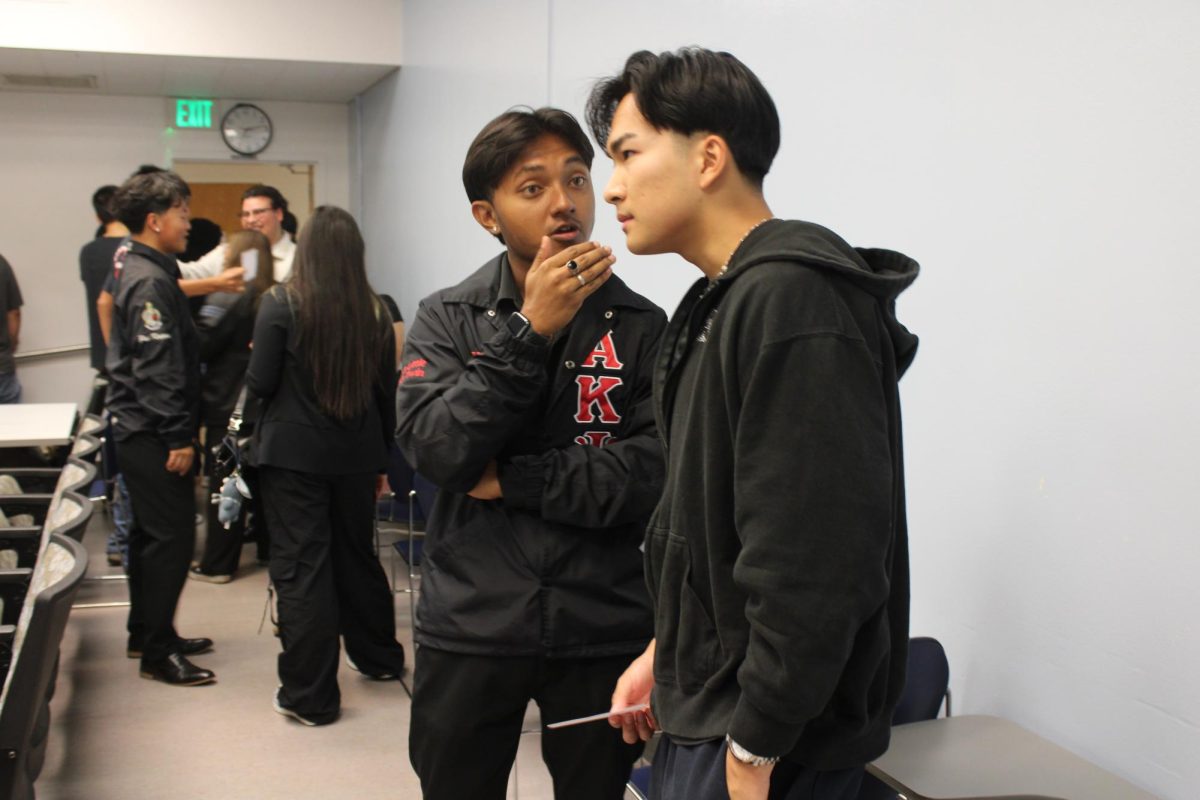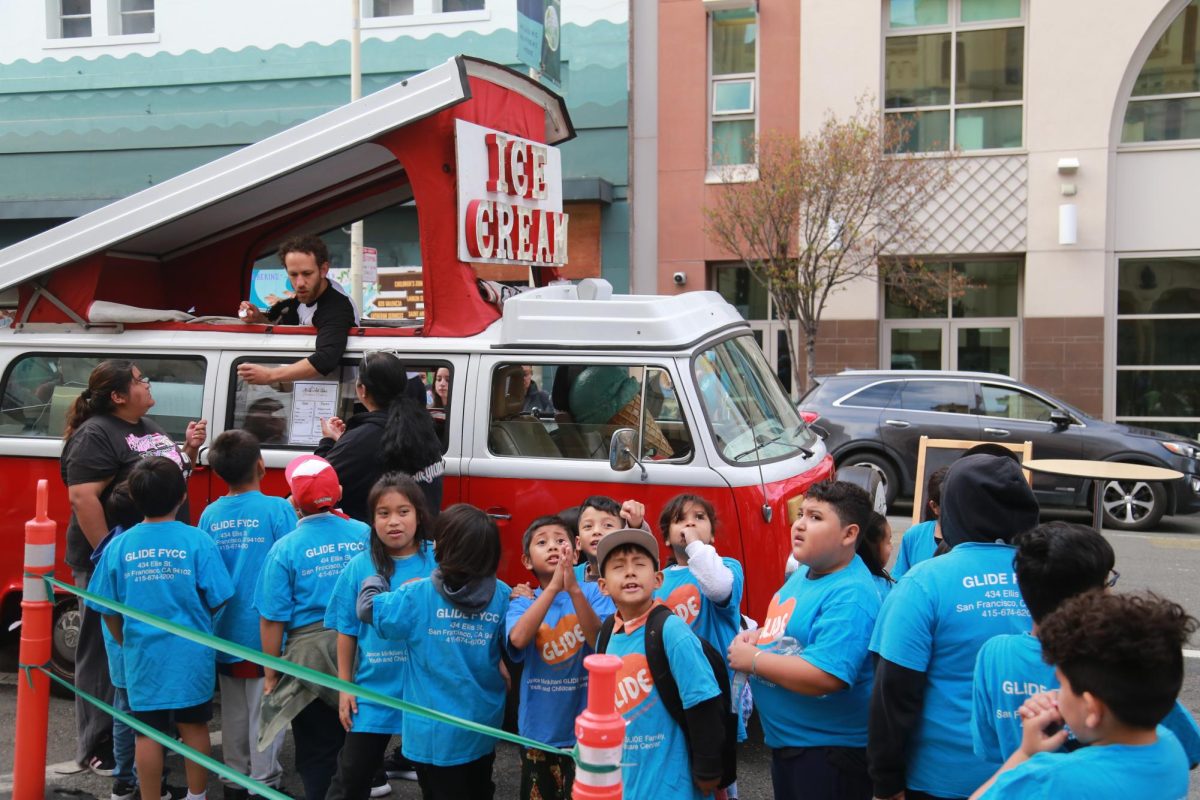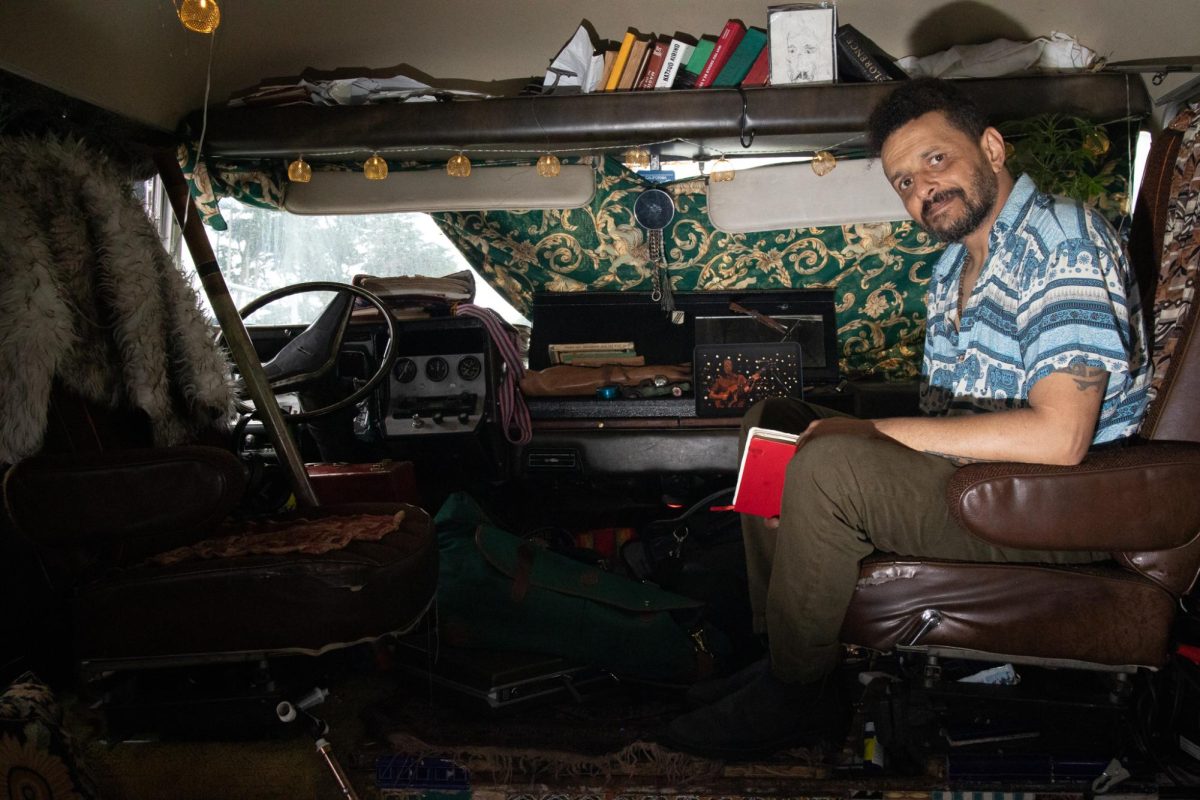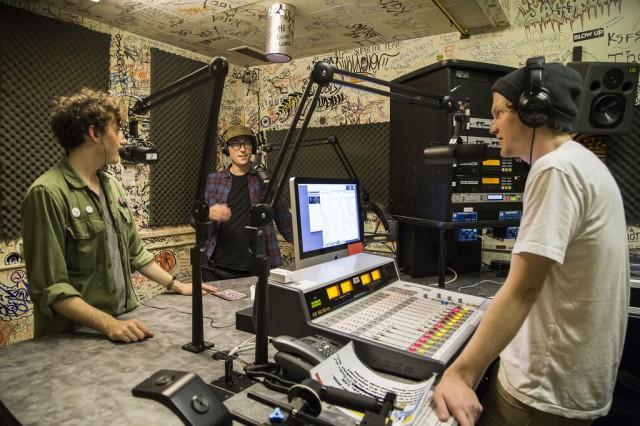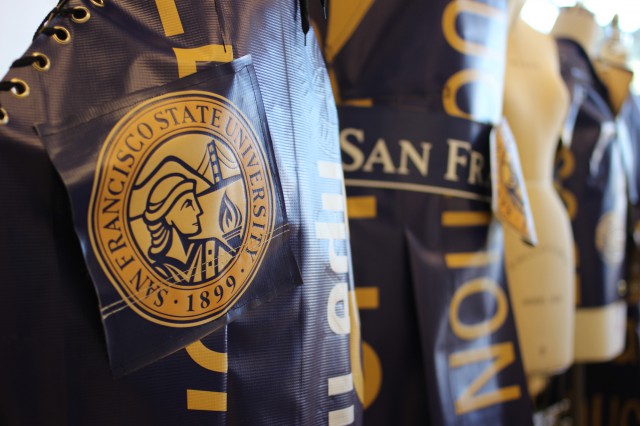
Written by Ben Tasner
Baby Boomers return to school in pursuit of facing new challenges and accomplishing life-long dreams.
In June of 1973, Anthony Maglio took off from Waco, Texas flying a freight carrier aircraft, just like he had many times before. Almost immediately, this night proved very different.
“I lost an engine on takeoff and made a controlled crash landing,” recounts Maglio. “They found me an hour-and-a-half later.”
He was in a coma for a month, the hospital for a total of four months, and spent another four months learning to walk again. He suffered neurological trauma, and a focal dystonia, which affected the finite skills in his right hand.
He returned to school at Southeastern Oklahoma State the following year and graduated with a bachelor’s of science, with a focus in physics. Exactly forty years later he is graduating with a master’s degree in gerontology (the study of aging) from SF State.
“I’m a lucky guy,” says Maglio, sixty-six, who hopes to start doctoral work in the fall at USF.
Maglio has spent a lifetime in the air, and has survived some close calls. He got shot in the leg while flying a helicopter in the Vietnam War, survived the crash in Texas, and flew to New York the morning of September Eleventh.
“I took off at midnight from LAX on September tenth and landed at Kennedy at six-thirty in the morning,” says Maglio. “I was in my hotel room, less than a mile from the towers, and somehow my wife got through, screaming, crying on the phone. I was in Manhattan for five days and it changed me about a lot of things.”
Afer a career as a captain for Delta Airlines, Maglio retired in 2005 and turned his attention to various projects including golf club design and school.
“I love my god, I love my wife, I love my son, I used to love hanging upside down in biplanes, and I love to learn more than you can ever imagine,” says an infectious Maglio, brimming with passion.
While examining nutritional problems among aging veterans at the VA Center in San Francisco, Maglio discovered motivational therapy, and has focused his work in the gerontology department at SF State toward helping elder diabetics who suffer from an ambivalence toward necessary change. He is using motivational interviewing as a therapy for lack of adherence to prescribed medication.
“A clinician can reach into a patient and draw out an intrinsic desire to make a change,” says Maglio, describing the motivational interviewing process. “It helps people gain an understanding of whatever they are ambivalent about, solve the problem sooner rather than later, save themselves money, and save our government money as well. That’s my dream.”
Of SF State, he says it’s been the best time of his life, academically, and he’s really learning to communicate effectively.
Maglio is one of many older students returning to school, a figure that has risen over the last few years. Approximately one quarter of all higher education students in this country are over the age of thirty, according to the National Center for Education Statistics, and that number is expected to rise. It is not uncommon to see someone in their forties, fifties, sixties, or older, on a university campus.
The American population is getting older. The US Census Bureau estimates that the population age sixty-five years and older is expected to double between 2000 and 2030, from thirty-five million people to seventy-two million. Each year, according to the enrollment data, SF State has roughly fifty or so undergraduate students age sixty or older, and around one hundred post-baccalaureate students that age.
Older students return to school for a variety of reasons. Some, like Maglio, have had a successful career and are in search of a new challenge, and want to develop tools to give back. For others, a college education has been a life-long dream, and is a chance to increase economic opportunities.
Terry Shelmire, fifty-three, works two jobs, seven days a week, and has only had one day off in the past six months. He says his feet hurt. Growing up in poverty, education was not a priority and he says that when you have the choice to start college or get your first job, you gravitate toward a job.
“Once you get in that way of thinking, once the money comes, even though they’re minimal jobs, not very much money, it’s like your momentum is going that way, and it’s hard to pull back,” says Shelmire.
Now he wants to break the cycle. Shelmire is enrolling at College of Marin this Fall where he will complete the remaining nine units he needs to be transfer eligible. He will take statistics, astronomy, and one more elective class. He plans to transfer to SF State in 2015 and major in communications.
“I made so many bad decisions as a young man, and in hindsight, as I look back those decisions kind of stagnated my life,” says Shelmire. “So if I go back I can improve my chances, I can help my community more, I can pursue better positions, better wages, and it can open doors that I can’t get in without education.”
He’s considering work as a minister, but he says most pastors won’t allow anyone without a degree to speak to a congregation. “Going back to school will help me tap into my fullest potential,” says Shelmire.
As the American population grows older, largely due to the aging “baby-boomers” generation, it becomes apparent that more emphasis should be placed on the study of aging, and the needs of older people.
Maglio’s research on diabetes in the elder community is one of many projects within the gerontology department at SF State, the first graduate gerontology program in the CSU and UC systems, founded by Annabel Pelham in 1986.
Part of Pelham’s mission is to debunk stereotypes and mythologies around aging. It is not all about pushing wheelchairs she says.
“We live in a segregated and ageist culture,” says Pelham. “Older adulthood is not really understood and appreciated, and there’s a lot of fear and anxiety around aging. But the potential and excitement that can happen from your sixth decade to your tenth decade is astonishing.”
Pelham grew up in the segregated south of Florida and has always been an advocate for social justice. Although people questioned her, she has dedicated her life to the study of aging.
“I started developing an interest in a class of people that I thought were ill-treated and ignored,” says Pelham. “When I first started in this field people didn’t know what the word gerontology meant.
Pelham’s work in the gerontology department has led to an expanded presence of older people at school. She created Sixty Plus, an independent organization geared to serve the needs of an older population who desire learning and growth in a campus setting. The program offers members an opportunity to attend lectures, partake in day and extended tours, share meals, and other special events.
For older students who wish to audit classes at SF State, Eldercollege, offered through the college of extended learning, provides students over the age of fifty a chance to audit any regular university course, on a space available basis, for fifty-five dollars a semester. Prior to Pelham’s arrival there was no formal opportunity for older students to continue life-long learning at SF State.
“I know that when we have older students in the classrooms, especially the undergraduate classrooms, the younger students gravitate to them and want to hear about their experiences,” says Pelham.
Manuel Sunshine, eighty-eight, a World War II veteran, has been a student at SF State for more than fifteen years. He said it has been difficult to get into the general education classes that all students are required to take. He finds it easier to audit the higher-level classes. Currently he’s focused on environmental science, which he finds increasingly important as the issues of global warming and climate change emerge. “Don’t buy real estate near the ocean,” says a half-joking Sunshine.
He thinks that nutrition and exercise are essential for older people, as well as socialization. He takes a chair exercising class on campus, and sticks to a strictly vegetarian diet. The classes and community on campus help alleviate the isolation that he faces.
For Isaac Hartstone, 88, education is important, but it has taken a backseat to other concerns. He attended San Francisco City College at an older age to receive his GED, but now he is focused on health, and has no interest in returning to school. For him, transportation is a primary concern.“I’m lucky I can still drive a little bit,” says Hartstone.
Dina Redman is a professor of social work and gerontology at SF State and says that older students have a lot to offer in the classroom. “They have a sense of focus, having had a series of different life experiences, and they have consolidated goals in terms of what they want to get from the education experience,” says Redman.
She says it can also be difficult, because older students are often juggling family, relationships, and work outside of school.
Redman coordinates the Student Success Program on campus, which offers a variety of services for students of all ages, including seminars for older students returning to school. She finds older students to be very dedicated students, not easily distracted.
Maglio is certainly motivated. He is planning an eighteen month study to prove that motivational interviewing is an effective therapy for diabetes. After so many years in the sky, his work is very grounded. As a single morbidity, diabetes is the seventh leading cause of death in America, and for people with other conditions, diabetes compounds the risk. He treats it as an epidemic, and is working hard to make a difference.
He recalls a story about a hummingbird that refused to surrender when the forest was burning. All the other animals had given up, but hummingbird continued to bring water, one drop at a time. Lion asked Hummingbird, why? Hummingbird replied, I’m only doing my part.
“I hate tattoos,” says Maglio. “But if I were to get a tattoo, I’d get a hummingbird. I want to do my part.”






